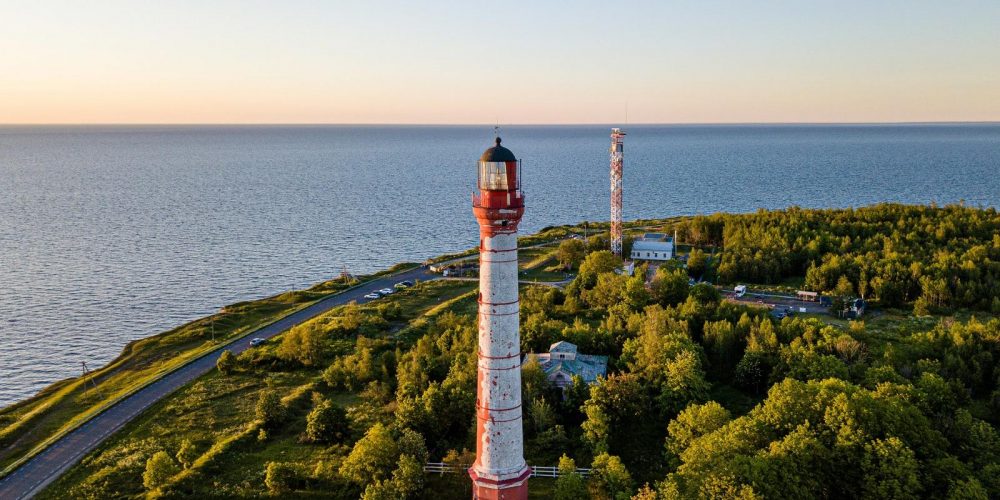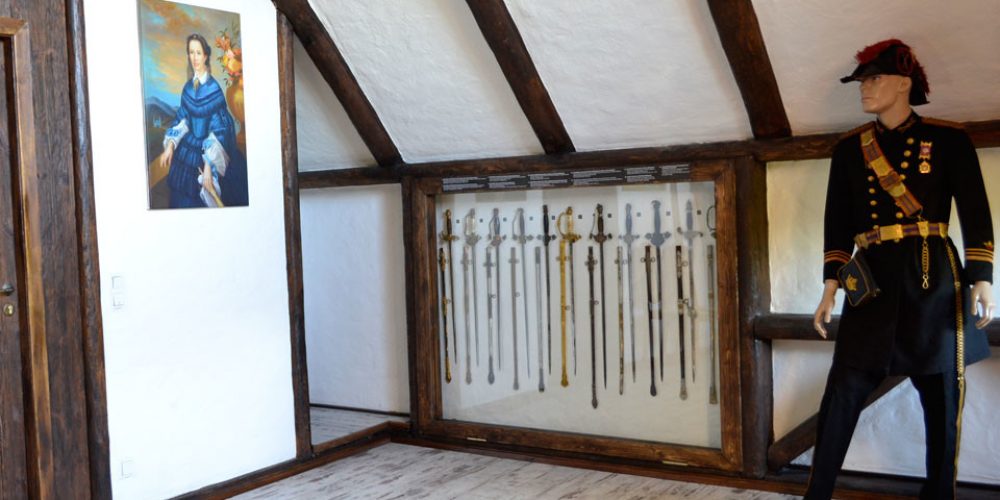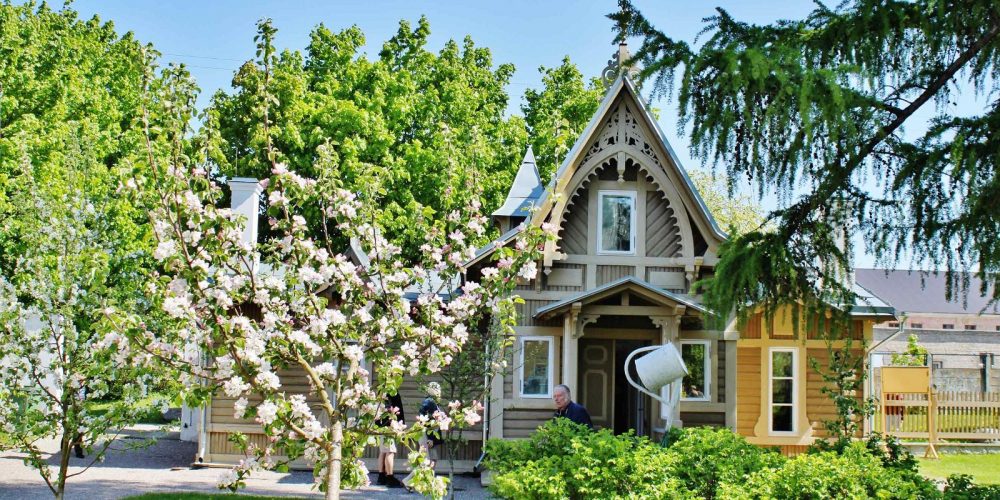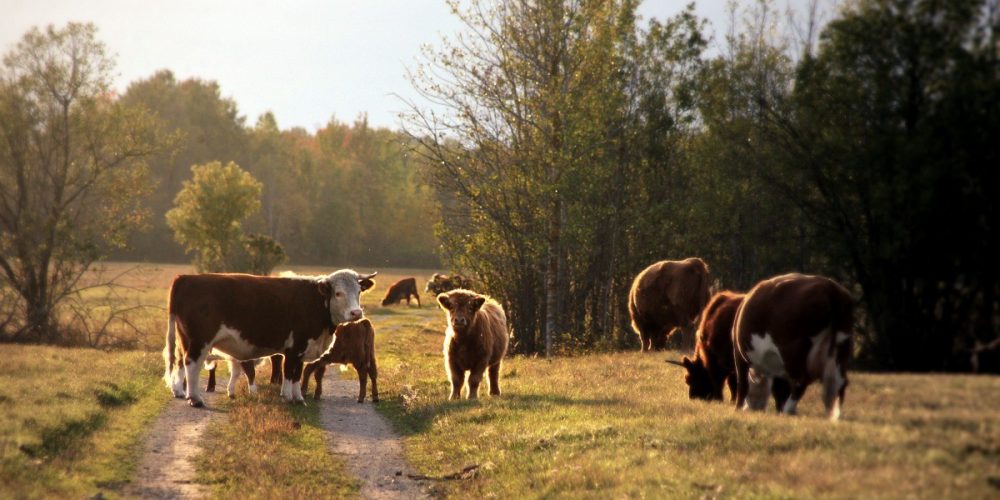Paldiski and Pakri Islands
On the Pakri Peninsula lies Paldiski, a town both rich in natuure and history. It is surely unique that when stanging in the middle of the town, one can see all four edges of the town at once. Across the bay from Paldiski are located mysterious islands Väike-Pakri and Suur-Pakri. Come and explore, what’s waiting for you here!

Pakri Lighthouse
This lighthouse is situated on the north-western tip of the Pakri peninsula on a high slate bluff marking the water’s edge of a very important shipping lane along the northern coast. A similar structure has stood here since the time of Swedish rule. A new slate lighthouse was ordered to be erected here by Peter I in 1724. Another, even bigger (48-foot) lighthouse replaced it in 1760 – possibly a reconstruction of the original.
A new stone lighthouse was completed 80 metres from its predecessor in 1889. Due to natural collapse of the cliff face, the old structure had ended up too close to the edge and had to be demolished.

Paldiski Museum of Regional Studies
Paldiski museum of regional studies is located on the first floor of the historical building of the tavern Peetri Toll. We have collected publications, books, photographs, and maps related to the history of Paldiski. A slideshow of old photos related to the history of Paldiski can be watched on a big screen. The slideshow includes almost 200 enlarged photos from the beginning of the 20th century. We also have on display a unique Estonian book of songs from the years 1939 to 1941 (both the original and digital version). The permanent exhibition ’Historical weapons from around the world’ exhibits approximately 150 items.
Visit Homepage
Bastion of Peter the Great’s naval fortress, or Muula hills
Paldiski harbour was destined to become an important stronghold in the Russian defence system, and Czar Peter the Great designed the Dutch type fortifications himself. The fortress with five bastions, located on Pakri peninsula, was cut into the high limestone as one solid construction; the earth walls were 4 m high and 17 m above the sea level. In 1790, the fortress had over 40 cannons.
Between 1939 and 1940, oil storages were built in the moat and a railway branch was extended to the fortress; however, the branch was destroyed during the war. During post-war period, gravel was taken from the earth walls for construction and roads, thus destroying walls between the east and south-east bastions.
Bastions provide a wonderful view of the sea.

Amandus Adamson Studio Museum
Studio Museum is situated in the summer studio of sculptor Amandus Adamson (12 November 1855 – 26 June 1929) in Paldiski. It showcases Adamson’s life and work, exhibiting his furniture, and photos of and documents about his family.
The walls of the building, which is adorned with carvings and a fancy weathervane, are covered in stencil drawings. The garden boasts a mighty larch that was planted by the sculptor.
In the summer, a gallery is opened in the ancillary building. The museum also organises a historical orienteering game Discover Paldiski if ordered in advance. You can also rent bikes here.

Väike-Pakri and Suur-Pakri Islands
There are two Pakri Islands: Suur-Pakri and Väike-Pakri. They are located at the northern coast near the town of Paldiski. Due to their diverse nature, both islands are under environmental protection.
During the Soviet occupation, the islands were completely militarised. Explosives training were conducted there, the signs of which can be seen to this day. The former military structures are dangerous structures, entering into which is not safe.
Suur-Pakri has repeatedly been demined but there are still explosives in the land and nearby sea. Therefore, when by oneself, it is advised to only move along the coast. It is also dangerous to make a fire on the island. Väike-Pakri is more demined and its visitors can safely stroll on its roads and paths and camp in designated areas.
When on the islands, go see the limestone cliffs (the highest is 13 metres) and coastal natural diversity characteristic to North Estonia. The area is also fascinating to bird watchers. On the islands and the sea between, there are plenty of giant boulders, the biggest of which have circumferences of over 21 metres. There are hiking trails on both islands taking you to the most enjoyable views.
Getting there
Although there being no regular transport to the islands, one can easily go there by pre-ordering a boat from Kurkse harbour. In addition, scheduled ticket fares are sometimes arranged. You can also go there on a kayak expedition together with professional guides.
Pack along your own food and water supplies and remember to bring back your waste.
